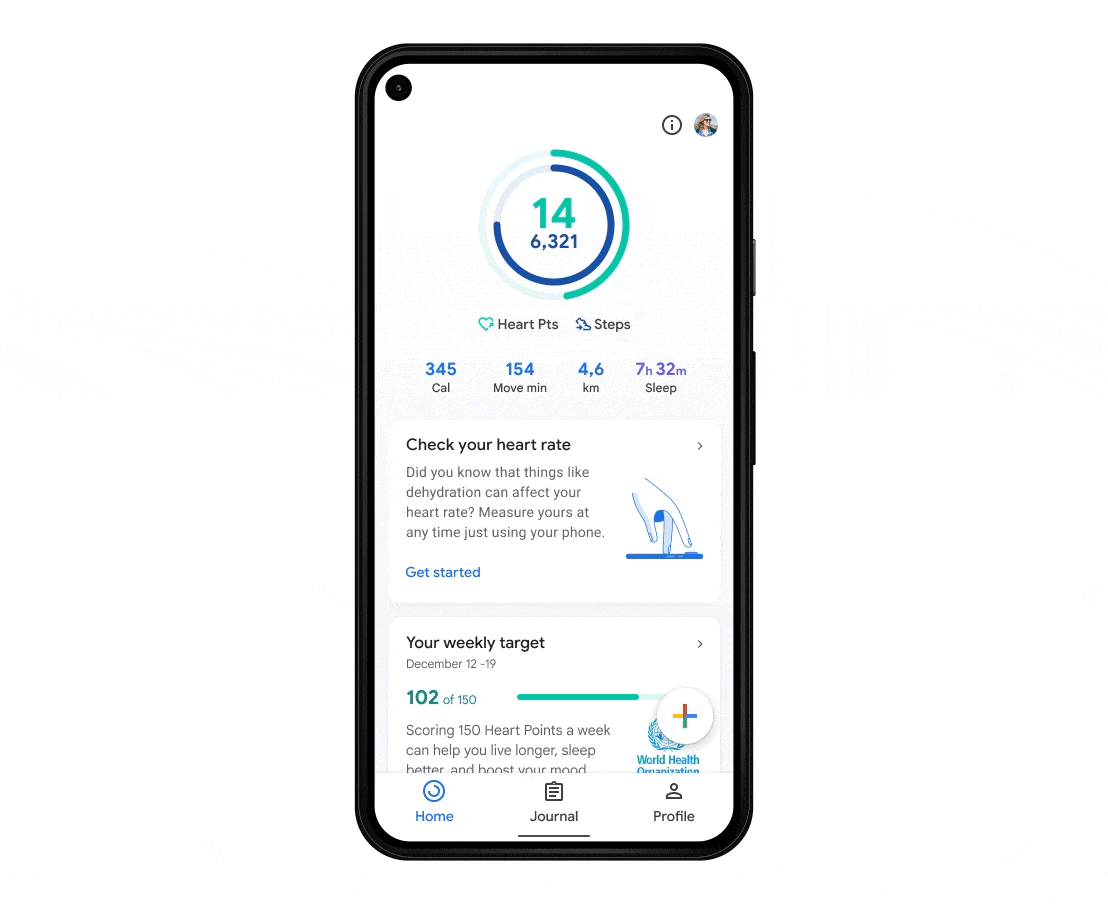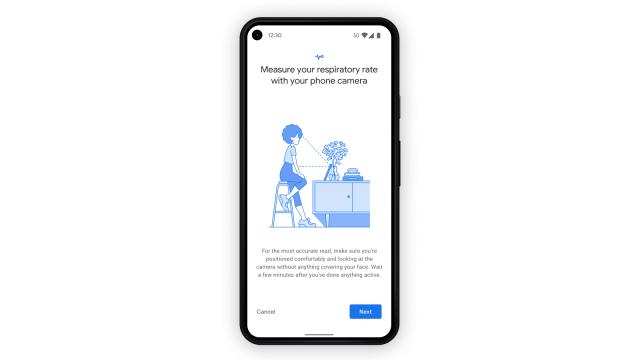As wearable devices like smartwatches become more sophisticated, with sensors that can do everything from detecting atrial fibrillation to measuring blood oxygen levels, smartphones have been left in the dust. And yet phones are far more ubiquitous, which is why Google has developed two new health-tracking features that use just a phone’s camera.
The features, coming next month to the Google Fit app on Pixel phones to start, allow users to take spot heart and respiratory rate measurements simply using their phone’s cameras. To take a heart rate reading, you place your fingertip against the phone’s rear camera and allow it to scan for the subtle colour variations that indicate changes in blood flow. The respiratory rate measurement uses the phone’s front-facing camera. You have to place the phone so that its selfie cam has a full view of your head and chest, then the camera takes a 30-second reading of your chest in motion to calculate your respiratory rate.

Google has been studying its respiratory rate algorithm’s effectiveness for both healthy and non-healthy people, and breath rates were within one breath per minute on average for both groups. For its heart rate algorithm, the company studied people across a variety of skin tones, and measurements were on average within 2% accuracy. Though Google is not yet seeking clearance from the U.S. Food and Drug Administration for these features — instead, it’s emphasising their usefulness for tracking overall wellness — the company said its measurements were comparable to clinical devices. (Google is currently preparing to submit its paper on the study results for peer review before publication in a scientific journal.)
Using a phone’s camera to take a heart rate measurement isn’t exactly new — there are third-party apps that offer the same, though it’s unclear how accurate those are. And in the past, Samsung has included heart rate sensors in its phones that also measure the heart rate from your fingertip. But the use of the camera to track respiratory rate is unique, and Google says it is studying how accurate measuring blood flow in the face is, too. Would it be extremely weird to track your heart rate using your phone camera? Yes. Would it be useful? Well… I’m not so sure.
Google argues that these breath and heart rate spot checks are comparable to the ones you get when you visit a doctor. But my doctor also knows a lot about my overall health and my family’s medical history, and would be able to provide context if my breathing sounded strange or if my heart rate was high. Smartwatches and fitness trackers that continuously track heart and breath rate also provide more context, because they know my baseline, my daily workout routine, and my sleep schedule.
Google Fit’s new features don’t offer any analysis or insight whatsoever. All you see is a measurement that you can choose to save or delete. It’s admirable to want to make health-tracking easier, and bringing those tools to Android phones would certainly make them more accessible. I’m just not sure randomly sampling my heart rate would tell me anything at all about my overall health, especially if I had no idea what was normal.
Google will be rolling out its new Google Fit features beyond Pixels to devices running Android 6 or later in coming months.
